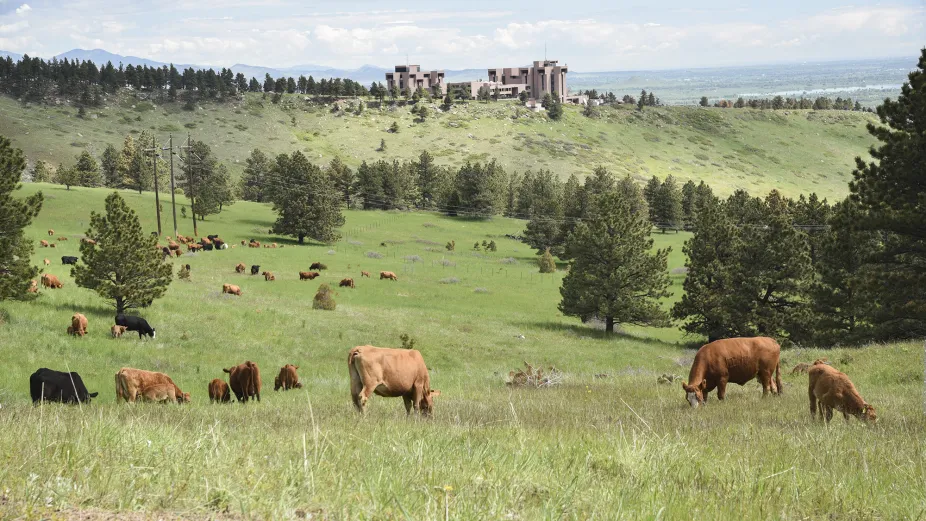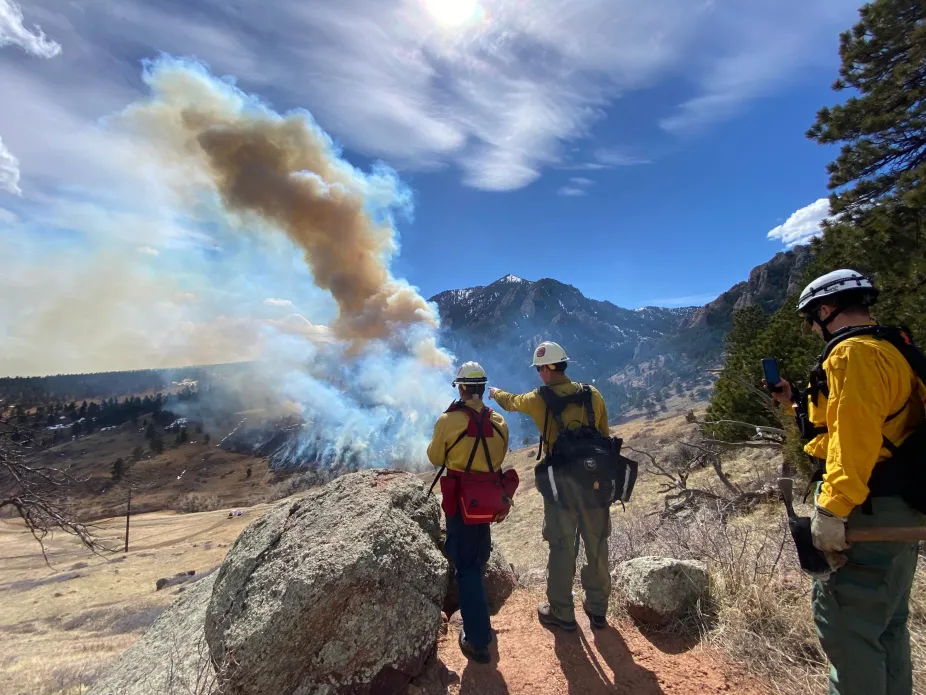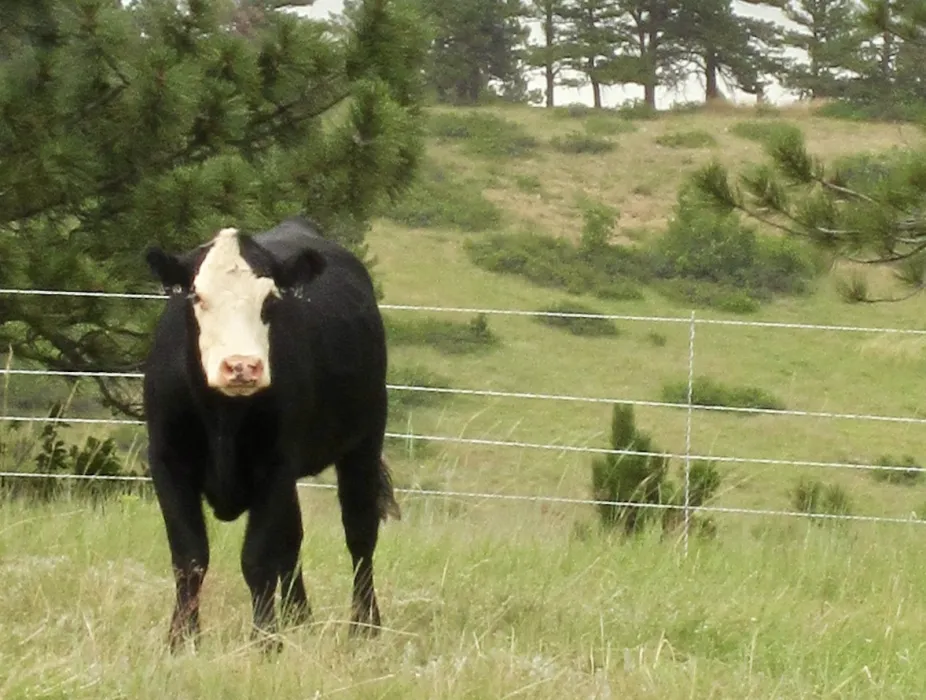Cows Helping the Environment
It might sound surprising, but cows can play an important role in helping the environment. Invasive weeds, especially when they create thatches and dry grass, provide greater fuel for fires to spread. Having cows on hand to eat these plants before they become a problem reduces the impact of fire. It also gives native plants, such as prairie grass, room to grow. Other animals that live in these habitats, such as rabbits, birds, and deer, also benefit since the grazing cows allow for other plants to grow. This provides these animals with a more diverse diet to thrive as well.

Every summer for a few weeks, livestock can be seen grazing near NSF NCAR.
City of Boulder
As an example of this approach, you can see cows grazing on the hills below NSF NCAR for a few weeks during the summer. How did they get there? Why are they there? The City of Boulder’s Open Space and Mountain Parks (OSMP) department works with local ranchers to bring their cattle to the Shanahan Ridge at the southwest edge of Boulder, Colorado, as a creative solution for reducing the amount of invasive plants in the area.
Fuel for Extreme Fires
Warmer, drier summers are becoming more common in the southwest region of the U.S. The drier season can result in wildfires that burn across larger regions with greater speed and intensity. While slow and steady fires are a natural part of an ecosystem, extreme fires can cause a lot of long-term damage to the land. For one thing, extreme fire can chemically change soil so that it doesn’t absorb as much water. This makes it harder for plants to grow, can cause erosion, and can lead to dangerous mudslides and flash flooding. Fires can also permanently change the types of plants and trees that grow in an area.
Open space management agencies use natural measures, such as cattle grazing or forest thinning, to lessen the danger of wildfires and to contain them faster. In 2022, for example, a human-caused fire burned 190 acres in the Table Mountain area in southwest Boulder, requiring over 19,000 residents to evacuate. Thankfully, the areas where cows ate the dried invasive grasses did not burn as much, helping to reduce the spread of the fire. This shows that these methods can work to help save lives and preserve land. Cattle grazing and forest thinning also help to cut down on air pollution from fires. Scientists at NSF NCAR & UCAR are doing further research to understand the impact of wildfires on the environment.

Fire fighters assess the damage of the NCAR fire, March 26, 2022
City of Boulder
Proper Management Makes a Difference
While every solution has its benefits, there are also consequences – even with cows. As cattle digest their food, they belch out methane gas (cow burps!) into the air, adding to the methane that is naturally found in small quantities in the atmosphere. According to the EPA, one cow can produce 154 to 264 pounds of methane gas in a year. Given the number of cows on the planet, that can add up quickly, contributing to roughly 7% of global methane emissions. However, 60% of methane emissions come from human activity via use of fossil fuels, landfills, and agriculture (which includes raising cattle). Methane is a greenhouse gas that absorbs heat and warms up the atmosphere like a blanket, contributing to climate change.
With proper management, there are ways to raise cattle that are less harmful to the environment. For example, scientists and ranchers are looking at ways to reduce the amount of methane cows produce. Some scientists are studying the type of food that cows eat and determining a diet that makes their digestive systems less “gassy.”

UCAR
Creating managed pastures for grazing that serve the dual purpose of growing trees can provide shade, greater plant diversity, and timber that ranchers can sell. This is called silvopasture.
Other management approaches, such as regenerative agriculture, provide grazing land time to recover, resulting in healthier soil. Some ranchers are changing their practices in order to create a more sustainable way of raising livestock.
You can think of the cows, grass, soil, air, and other plants and animals as part of a system. Every part of the system affects one another. The more we learn in order to understand the parts of this system, how it works, and how to keep it in balance, the better it is for the planet. So the next time you see a cow, you might be moooved to say thanks!